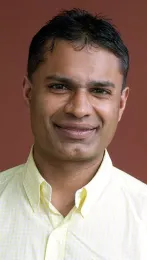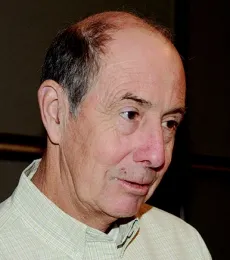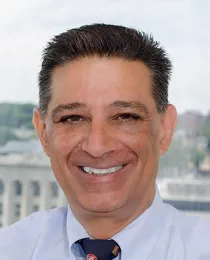
As of July 8, the commentary, “Inflammation Resolution: a Dual-Pronged Approach to Averting Cytokine Storms in COVID-19?”—the work of a nine-member team of Harvard University and UC Davis researchers—has been downloaded 11,444 times since its publication May 8, 2020. It is online at https://rdcu.be/b33IN.
In comparison, the most downloaded publication in CMR in 2019 received 5,712, statistics show.
Editor-in-Chief and Professor Kenneth Honn, who selected their commentary as the top paper of the month, said it drew more downloads the first week of publication than any other in the journal's history. The work is based on more than 40 years of eicosanoid research from the Hammock lab and more than 40 years of eicosanoid research from the Charles Serhan lab at Harvard Medical School.
“COVID-19 results in excessive inflammation and a cytokine storm caused by the human body's reaction to the SARS-CoV-2 virus,” said lead author Dipak Panigrahy, a Harvard University physician and researcher who collaborates with the Hammock laboratory.
“Controlling the body's inflammatory response to COVID-19 will likely be as important as anti-viral therapies or a vaccine,” Panigraphy said. “Stimulation of inflammation resolutions via pro-resolution lipid mediators that are currently in clinical trials for other inflammatory diseases is a novel approach to turning off the inflammation and preventing the cytokine storm caused by COVID-19.”

The drug is an inhibitor to the soluble epoxide hydrolase (sEH) enzyme, a key regulatory enzyme involved in the metabolism of fatty acids.
Panigraphy and Hammock said they are receiving “tons of calls, media requests and emails” from all over the world, including Norway, Japan, United Kingdom, Germany, France, Mexico and Belgium.
Pioneering research from the Panigrahy and Hammock labs shows that cell debris from surgery, chemotherapy, toxin exposure and other causes lead to production of high levels of pro-inflammatory mediators commonly called cytokines as well as eicosanoids.

“A rapid immune response is critical to controlling this virus,” Panigrahy emphasized.
“We believe it holds promise to combat the inflammation involved with this disease,” said co-author Hammock, a UC Davis distinguished professor who holds a joint appointment with the Department of Entomology and Nematology and the UC Davis Comprehensive Cancer Center. “It hit me in March that what we really need to do is not so much block cytokines as to move upstream to modulate them and resolve them rather than block inflammation.”
“We can increase the concentration of natural pro-resolving mediators termed EETs which act on a biological system to produce other pro-resolution mediators which modulate inflammation and actively resolve the process,” explained Hammock, who founded the Davis-based company EicOsis Human Health LLC, to bring the inhibitor to human clinical trials, which are underway in Texas.
The co-authors include two physician-researchers: Patricia Sime of the Division of Pulmonary and Critical Care Medicine, Virginia Commonwealth University, Richmond, and Irene Cortés-Puch of the Division of Pulmonary, Critical Care and Sleep Medicine, UC Davis Medical Center, and an EicOsis project scientist.
“It is this resolution of inflammation and the subsequent repair that is critical to restore patient health,” said Serhan, whose studies with collaborator Sime show that immune resolution and repair are active processes in the lungs and other tissues. What drives the process, Serhan said, is the production of specific pro-resolving agents (SPMs).
Other co-authors of the paper are Molly Gilligan and Allison Gartung of the Panigrahy lab; Sui Huang of the Institute for Systems Biology, Seattle; and Richard Phipps, independent scholar, Richmond, Va.
National Institutes of Health (NIH) grants, including a National Institute of Environmental Health Science (River Award) to Hammock, helped fund the research. The Panigrahy laboratory is generously supported by the Credit Unions Kids at Heart Team; the C.J. Buckley Pediatric Brain Tumor Fund; and the Joe Andruzzi Foundation.

